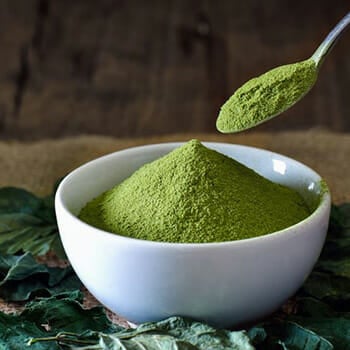People hesitate with fat burners due to side effects, but they're crucial for quick fitness gains.
After thorough research and client input, I've identified seven top natural fat burners. These gems effectively shred fat and shape your body, and they're easy to find.
Mix them into your diet or supplements to ramp up your metabolism and energy burning, edging you closer to your fitness targets. They're your ace in the hole for a leaner, healthier you.
Tip: Combine these natural fat busters with consistent workouts and a healthy diet for maximum impact on your fitness quest.
Quick Summary
- Natural fat burners like caffeine, ginger, garlic, green tea extract, turmeric, cinnamon, and fiber can effectively aid in weight loss when incorporated into your daily routine.
- Ginger can be added to hot water to create a tea-like tonic, offering a practical way to consume this natural fat burner.
- According to the National Institute of Health, the body uses enzymes and water to break down fatty tissue.
- While I'm not fond of green tea extract's taste, its undeniable benefits for weight loss make it a staple in my choice of fat-burning supplements.
What Are The Best Fat Burners?
I've got some great news for you! There are several effective fat burning supplements that you can easily incorporate into your daily diet. These supplements do more than just help with weight loss; they also provide additional health benefits that are often overlooked.
By including these fat burners in your everyday routine, combined with a healthy lifestyle, you can significantly enhance your weight loss results and improve your overall health. This approach will make your fitness journey not only more successful but also sustainable in the long run.
1. Caffeine

I often highlight that caffeine is a crucial component in weight loss supplements for boosting metabolism and reducing hunger cravings.
From our analysis, Burn-XT thermogenic fat burner packs two and a half times more caffeine per serving compared to a standard cup of coffee.
But hold off on those extra coffee runs. Too much caffeine can actually diminish its benefits as your body becomes tolerant. This is why I recommend my clients switch between caffeine-based and caffeine-free supplements to optimize fat burning.
Take a look at our top picks for caffeine-free fat burners to effectively manage your weight. Here are some of our recommended caffeine-free fat burners.
2. Ginger

I was introduced to ginger as a teenager when my grandad swore that it helps with joint pains. The reason it can help with sore joints is that it’s a natural anti-inflammatory, which quite a few research studies have been able to prove.
Those studies have also shown that ginger has effects on people’s thermogenic metabolism. Quite a few burn fat supplements are available, but it’s also really easy to include them with a healthy diet (more on this below).
3. Garlic

I often get asked about the drawbacks of using garlic for weight loss, especially its strong smell. Yes, garlic is tasty, but its lingering odor can be a turn-off.
Here's the good news: odorless garlic extracts exist that help with fat loss, similar to caffeine, but without the smell. These extracts are a handy and efficient way to lose fat, ideal for those hesitant to include garlic in their weight loss regimen.
Related Article: Best Garlic Supplements
"Studies show that allicin (a compound produced when garlic is finely chopped or crushed) may lower blood pressure, especially in those with already high blood pressure. Lower pressure means a healthier heart and a healthier you."
- Lisa Lillien, Author & Blogger
4. Green Tea Extract

I'm not keen on green tea extract's taste, but its benefits are undeniable, especially for weight loss. That's why I always pick fat-burning supplements with green tea extract.
According to NIH it has antioxidant properties and detoxifying effects, helping rid the body of harmful toxins [1]. Moreover, green tea excels in boosting fat metabolism and oxidation, much like caffeine.
Clearly, green tea's advantages are impressive, which is why our top-recommended nighttime fat burner includes it.
5. Turmeric

This was actually a new one for me, but I have noticed that quite a few thermogenic fat burners include it because there have been some positive results from research studies. One, in particular, went through a trial with overweight or obese people and did see a positive correlation.
If you like adding Asian spices to your food, then turmeric is actually a very tasty way to help you lose weight and burn fat using completely natural foods.
6. Cinnamon

No, this is not a recommendation to find the nearest Cinnabon and get some blood sugar spikes going. As tasty as those treats are, they will cause all sorts of problems for your blood pressure and heart health.
But cinnamon itself is not the culprit, and research studies have revealed that it contains an oil that is linked to thermogenic effects. You can also watch this video to learn how to mix cinnamon into water to promote weight loss. Let me know if it works for you.
7. Fiber
If you want to lose weight and struggle with the hunger cravings, then higher levels of dietary fiber intake can help you increase your success rate. Many types of fiber will pass through your digestive system, which means they don’t even count as calorie intake.
Eating high-fiber foods alongside high-protein foods will also help your overall gut health, which will make it a lot easier for you to break down nutrients, including protein, carbs, and fatty acids.
And the more effective your digestion is, the easier it will become to lose weight and burn fat. These are just a few of the many fat burners out there. Here are a few more bonus fat burners for you to lose body fat and prevent weight gain:

How Does Your Body Metabolize Fat?

As a fitness trainer, I often hear how frustrating it is that gaining weight seems easier than losing it. There's actually a biological basis for this. From a historical standpoint, our ancestors needed to store fat for survival during the winter months.
It's common to see people getting caught in a cycle of continuous weight gain. However, I always emphasize to my clients that with a proper diet and exercise regimen, it's possible to boost your metabolism and increase fat burning, effectively reducing body fat.
1. Thermogenics
This is a metabolic process where your body composition will increase its core temperature. And the energy for this is released from body fat storage. Many of the most popular fat-burning supplements trigger this process as a primary way for people to lose weight and burn fat.
2. Lipolysis
This process is quite a bit more complex and more difficult to target in your metabolism. According to the National Institute of Health (NIH), your body will use enzymes and water to break down fatty tissue [2].
A lot of experimental drugs and prescription medication for obese adults aim to target lipolysis while burning fat.
Other resources you may like:
Are All The Ingredients Safe To Take?

Good news: fat burners are usually safe with no side effects. But, hold off on dashing to the health store. For effective weight loss, moderation is key. Overloading your diet with these ingredients isn't wise.
- Firstly, even without allergies, too much can cause side effects and make you ill.
- Secondly, overuse can dull your metabolism, lessening the benefits. It's smart to rotate these supplements regularly.
Safety tip: Start with small amounts, especially with new items. Once you're sure there's no intolerance, you can up the dose and try various combos.
How Can You Implement Them In Your Diet?

Adding these weight loss ingredients to your daily routine is a breeze. Brew some ginger in hot water for a tea-like drink. It's an acquired taste, but a solid way to consume ginger.
I sprinkle cinnamon on my morning oatmeal and kick off the day with coffee, ticking two boxes right away. Garlic's a bit tricky for me because of its strong smell, and I need to be mindful of my job's social nature.
Turmeric's a regular in my diet, in curries or as capsules—it's good for the brain too! And don't forget about conjugated linoleic acid supplements for extra perks.
"It is turmeric's abundance of a compound called curcumin that makes it so special. Studies have shown that curcumin is an antioxidant, meaning that it can protect our cells against damage caused by free radicals."
- Honor Whiteman, Editor
Natural Fat Burning Supplements You Can Take:
Comparison with Synthetic Fat Burners
Natural fat burners, such as green tea extract and cayenne pepper, usually promote gradual weight loss with milder effects and fewer side effects, aligning with the body's rhythms. Their effectiveness, though, can be limited.
On the flip side, synthetic fat burners, like certain medications, may yield faster results but risk side effects like insomnia or a racing heart.
The long-term health implications of synthetics are also concerning. People's choices differ: some prefer natural options for their perceived safety and eco-friendliness, while others opt for the quicker results of synthetic alternatives.
FAQs

What Do Fat Burners Do?
Fat burners help boost metabolism, increase energy expenditure, and potentially aid in weight loss by promoting the breakdown of stored fat. However, their effectiveness can vary, and they should be used with caution and in conjunction with a balanced diet and exercise for best results.
Do Fat Burners Really Work?
Yes, fat burners really do work, as long as you pick natural ingredients that have been scientifically proven to increase levels of metabolic activity. By triggering thermogenic effects, you can burn extra calories while going about your regular daily life. It's especially when you consume conjugated linoleic acid alongside these.
What Foods Help Burn Belly Fat?
The most effective foods to help burn belly fat include caffeine, ginger, turmeric, and cinnamon. They have all been proven to have positive effects on weight loss and are very easy to add to your daily diet.
Which Fruit Burns the Most Fat?
Garcinia cambogia and blueberries are two fruits that help to burn the most fat. Not only are they a great way to get plenty of vitamins and antioxidants into your system, but they also trigger thermogenic processes to help you melt away some of those stubborn flabby areas.
Does Lemon Burn Fat?
No, lemon doesn’t burn fat, and it is a very common misconception. But studies have shown that it’s no more effective than plain water. However, when you drink fresh lemon water, it can help to suppress your appetite and deal with hunger pains.
Does Green Coffee Bean Extract Burn Fat?
Yes, green coffee bean extract does help to burn fat, or more accurately, the caffeine it contains will do all the work. It’s a known thermogenic, which means it will increase your body temperature by processing extra fat as a source of energy.
What Is Fat?
What Are Different Fat Types?
What Is Brown Fat?
Brown fat is as a type of body fat that steps up to regulate body temperatures, especially in cold conditions, and is very common in babies. The neck, and the shoulders are the most popular places where brown fat is found.
What Is Monosaturated Fat?
Monounsaturated fat is a type of healthy dietary fat found in foods like olive oil, avocados, and nuts. It is known for its potential health benefits, such as improving heart health and reducing inflammation.
What Is Unsaturated Fat?
What Is Trans Fat?
Trans fat is a type of unhealthy dietary fat that is formed when vegetable oils are hydrogenated and is found in many processed and fried foods. Consuming trans fat is associated with an increased risk of heart disease and should be avoided.
What Is Saturated Fat?
Saturated fat is a type of dietary fat found in animal products like meat, dairy, and some plant oils, such as coconut oil and palm oil. Consuming too much saturated fat can raise cholesterol levels and increase the risk of heart disease when consumed in excess.
References:
- https://www.ncbi.nlm.nih.gov/pmc/articles/PMC3679539/
- https://www.ncbi.nlm.nih.gov/pmc/articles/PMC3031774/
About The Author
You May Also Like






